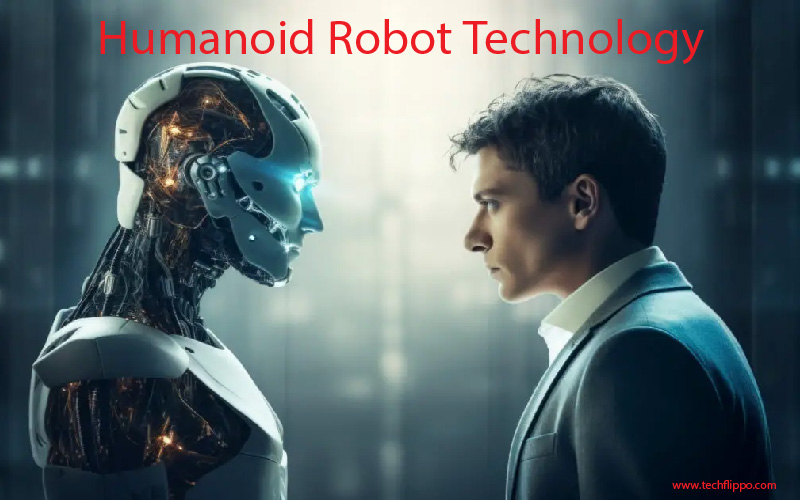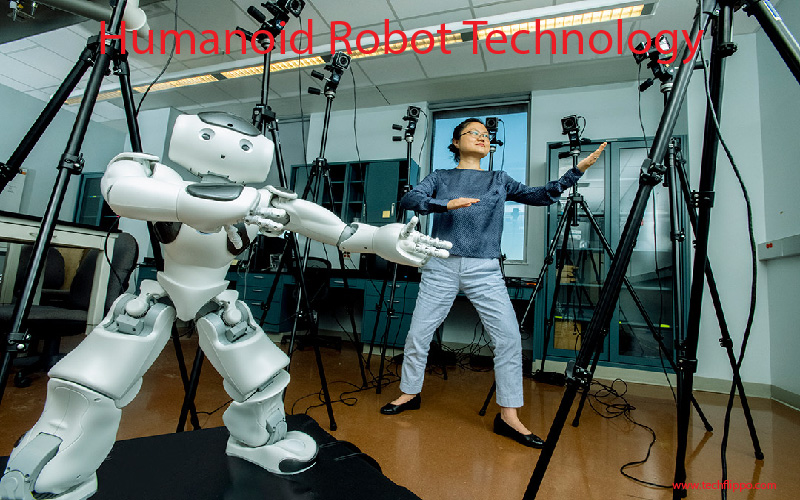The Advancements in Humanoid Robot Technology
Step into the fascinating world of humanoid robot technology, where science fiction becomes reality. Imagine a future where robots walk among us, resembling humans in both appearance and behavior. In this blog post, we will explore the evolution of humanoid robots, their incredible advancements in artificial intelligence, real-life applications, as well as the challenges and possibilities that lie ahead. Join us on this journey through the cutting-edge realm of Humanoid Robot Technology!

The History of Humanoid Robot Technology
Human fascination with humanoid robots dates back centuries, with early concepts appearing in ancient mythology and folklore. However, it was not until the 20th century that significant progress was made in bringing these mechanical beings to life. The first humanoid robot, Elektro, debuted at the 1939 World’s Fair and captured the imagination of the public with its ability to speak over 700 words.
Throughout the decades that followed, advancements in technology paved the way for more sophisticated humanoid robots like ASIMO by Honda and Sophia by Hanson Robotics. These robots showcased remarkable capabilities in movement, interaction with humans, and even emotional expression. As artificial intelligence evolved hand-in-hand with robotics, humanoid robots became increasingly lifelike and versatile.
Today, humanoid robot technology continues to push boundaries with innovations such as Boston Dynamics’ Atlas robot capable of performing complex tasks autonomously. With each milestone achieved in history…
The Benefits of Humanoid Robots
Imagine a world where humanoid robots assist in dangerous tasks, keeping humans out of harm’s way. These advanced machines can be deployed to handle hazardous environments like nuclear power plants or disaster zones with ease and precision.
Humanoid robots are also revolutionizing the healthcare industry by providing support to medical professionals in surgeries and patient care. Their accuracy and steadiness make them ideal partners for delicate procedures, ultimately improving outcomes for patients.
In the field of customer service, humanoid robots offer a personalized experience by interacting with customers in a human-like manner. They can provide information, answer queries, and even entertain guests in hotels or airports.
Moreover, humanoid robots have the potential to enhance productivity in industries such as manufacturing and logistics by performing repetitive tasks efficiently without fatigue or errors. This results in cost savings for businesses and higher quality products for consumers.
Advancements in Artificial Intelligence and Robotics
As technology continues to evolve at a rapid pace, the advancements in artificial intelligence and robotics have been nothing short of groundbreaking. From sophisticated algorithms that mimic human decision-making processes to advanced sensors and actuators that enable robots to interact with their environment, the progress in this field has been truly remarkable.
One of the key developments in recent years is the integration of machine learning techniques into humanoid robot systems. This allows robots to continuously improve their performance over time through experience and data analysis. Additionally, the use of neural networks has enabled robots to better understand natural language commands and gestures, making human-robot interaction more seamless than ever before.
Moreover, advancements in computer vision have empowered humanoid robots with the ability to recognize objects, navigate complex environments, and even interpret facial expressions. This has opened up new possibilities for applications such as healthcare assistance, customer service, and disaster response.
The ongoing advancements in artificial intelligence and robotics are driving innovation across various industries, revolutionizing how we perceive technology’s role in our daily lives.
Real-Life Applications of Humanoid Robots
Humanoid robots have transcended the realm of science fiction and are now making their mark in real-life applications across various industries. In healthcare, these advanced machines are assisting surgeons with precision tasks during delicate operations, enhancing patient care outcomes.
In the field of customer service, humanoid robots are being deployed to interact with customers in stores and hotels, providing information and assistance efficiently. They offer a unique blend of technology and human-like interactions that enhance customer experiences.
Moreover, humanoid robots are also being utilized in education settings to engage students in interactive learning experiences. These robots can adapt their teaching methods based on individual student needs, making education more personalized and effective.
Furthermore, humanoid robots are proving to be valuable assets in disaster response scenarios by navigating hazardous environments to locate survivors or assess damages without risking human lives. Their agility and ability to perform tasks autonomously make them indispensable in such critical situations.
The versatility of humanoid robots continues to expand as they find new roles in various sectors, revolutionizing how we work and interact with technology.

Challenges and Concerns Surrounding Humanoid Robots
As with any groundbreaking technology, humanoid robots come with their fair share of challenges and concerns. One major concern is the potential loss of jobs as these robots become more advanced and capable of performing tasks traditionally done by humans. This shift in employment dynamics could have significant economic impacts.
Another challenge is the ethical considerations surrounding humanoid robots, especially in terms of privacy invasion and security risks. As these machines become more integrated into our daily lives, questions arise about data protection and surveillance issues.
Additionally, there are worries about the potential misuse of humanoid robots for malicious purposes, such as autonomous weapons or unlawful activities. Ensuring proper regulations and safeguards will be crucial in preventing such scenarios from unfolding.
Navigating these challenges and addressing these concerns will be essential in harnessing the full potential of humanoid robot technology while mitigating any negative repercussions that may arise.
Future Possibilities for Humanoid Robot Technology
As we look ahead to the future of humanoid robot technology, the possibilities seem endless. With rapid advancements in artificial intelligence and robotics, we can anticipate even more sophisticated and capable humanoid robots entering our daily lives.
Imagine a world where humanoid robots assist in healthcare settings, providing personalized care to patients with precision and empathy. These robots could revolutionize eldercare by offering companionship and support to the elderly population.
In education, humanoid robots could serve as interactive tutors, catering to individual learning styles and pacing. Students may find themselves engaged in dynamic lessons tailored to their needs by these intelligent machines.
Moreover, in industrial applications, humanoid robots could enhance productivity on factory floors through their ability to perform repetitive tasks with speed and accuracy. This integration of robotic technology could streamline manufacturing processes like never before.
The potential for humanoid robot technology is vast, promising a future where human-robot collaboration leads to greater efficiency, innovation, and quality of life for individuals across various sectors.
Conclusion
Humanoid robot technology has come a long way since its inception, showcasing remarkable advancements in artificial intelligence and robotics. The benefits of humanoid robots are vast, ranging from assisting in dangerous tasks to aiding individuals with disabilities. Despite the challenges and concerns surrounding their development, the future possibilities for humanoid robots are truly exciting.
As technology continues to evolve at a rapid pace, it is clear that humanoid robots will play an increasingly significant role in various industries and everyday life. With continuous innovation and research, we can expect even more groundbreaking achievements in the field of humanoid robot technology. It is fascinating to imagine what the future holds as these intelligent machines become more integrated into society.
Humanoid robot technology represents a fusion of science fiction and reality, pushing the boundaries of what was once thought possible. As we move forward into this new era of automation and AI, it is essential to embrace these advances while also considering the ethical implications they may bring. Humanoid robots have the potential to revolutionize how we live and work – making our lives easier, safer, and more efficient than ever before.